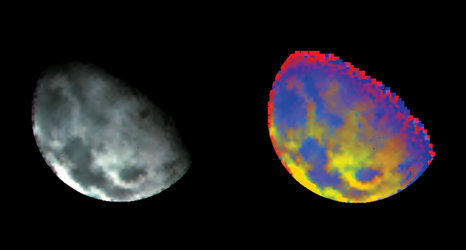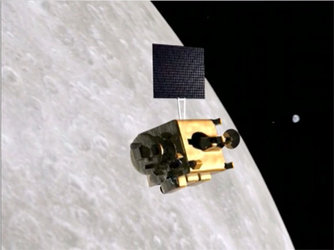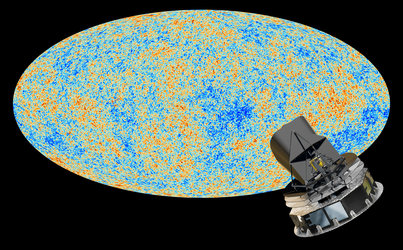What’s special?
A 'champion' in high-quality remote sensing
Although missions have collected lunar samples in the past to analyse later on ground, the role of remote sensing of the lunar surface is gradually increasing. Direct, in-situ exploration of the Moon, particularly by the Apollo, Luna, and Lunar Prospector missions have provided a considerable amount of data of the lunar surface which gave us an insight into the processes responsible for lunar origin and evolution. Nevertheless, there are many aspects, such as the global mineralogical composition, size and structure of the Moon, that require further study from orbit using remote-sensing techniques. Other aspects that require study are the existence of ice and water in the permanently-shadowed lunar polar regions, and the hemispheric asymmetry between the Earth-facing and the far side of the Moon.
Accommodating eleven instruments on board, Chandrayaan-1 will record high-quality visible, near infrared, low- and medium-energy X-ray data of the Moon to help answer these questions from orbit.
Global coverage of the Moon’s surface composition
More than any other question about the Moon, our understanding of the evolution of lunar crust strongly depends on our knowledge of its composition. Chandrayaan-1 will collect global surface composition data to understand the formation and evolution of lunar crust and the processes that have modified it during its history.
ESA and Europe’s fundamental contribution
The experience and know-how ESA gained with SMART-1, Europe’s first mission to the Moon, is benefiting Chandrayaan-1 greatly. ESA is assisting ISRO in operations, data handling, flight dynamics for the mission. ESA is also coordinating the provision of three European instruments for the mission, two of which were already flown on SMART-1:
- The Chandrayaan-1 X-ray Spectrometer (C1XS) is one of the core instruments that will carry out high-quality, low-energy (soft) X-ray spectroscopic mapping of the Moon
- The near infrared spectrometer, SIR-2, a near-infrared spectrometer will study the chemical composition of the Moon’s crust and mantle
- The Sub-keV Atom Reflecting Analyser SARA will be the first-ever lunar experiment dedicated to direct studies of plasma-surface interactions in space.
Precursor for future space missions
Chandrayaan-1’s objectives will be of great value for future missions to the Moon, Mercury (such as ESA’s BepiColombo) and other bodies in the solar system which do not have an atmosphere. For example, a replica of the SARA LENA sensor is also included in BepiColombo’s Mercury Magnetospheric Orbiter. This opens up ample possibilities for comparative planetology studies.











